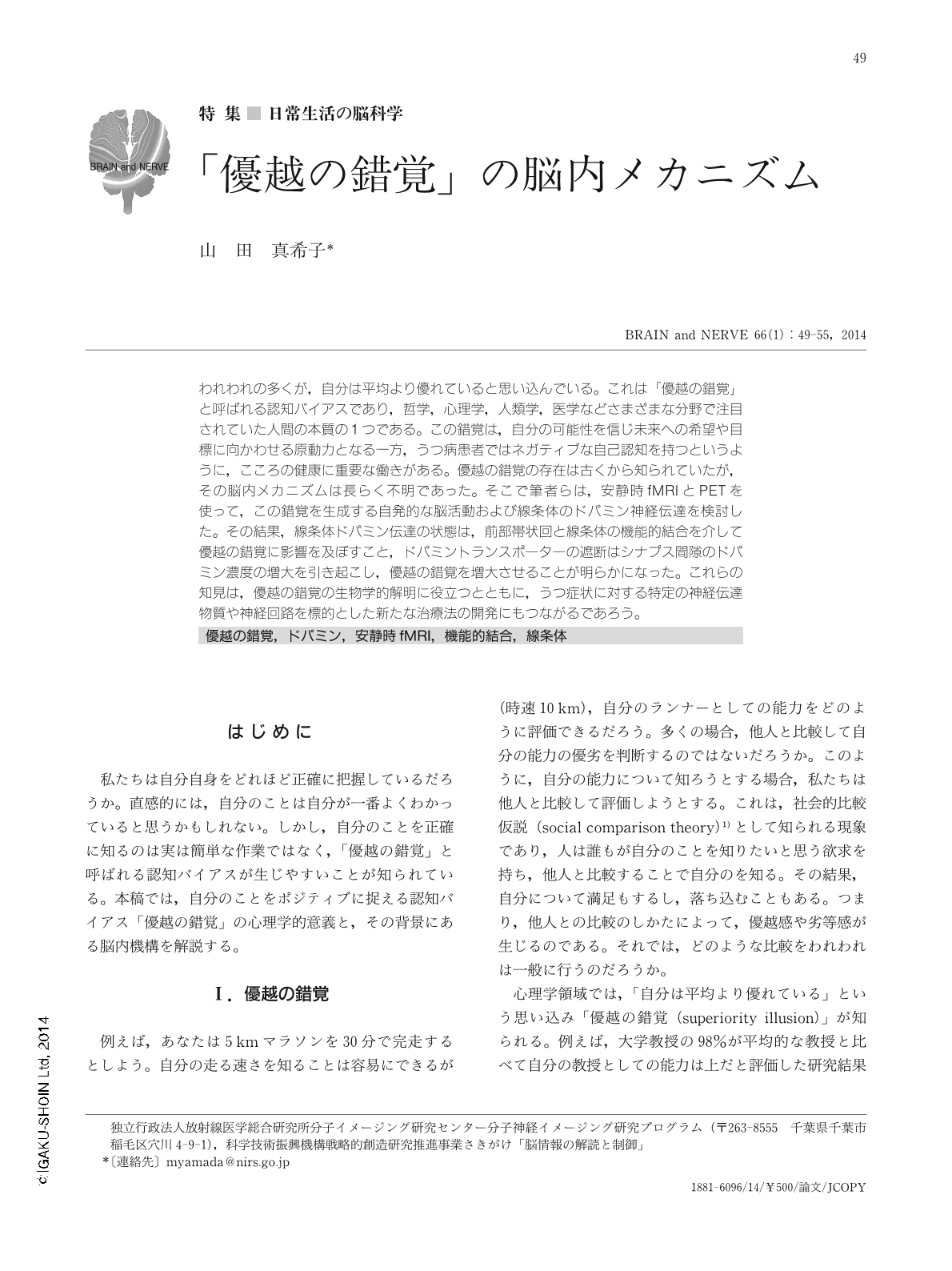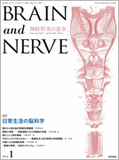Japanese
English
- 有料閲覧
- Abstract 文献概要
- 1ページ目 Look Inside
- 参考文献 Reference
われわれの多くが,自分は平均より優れていると思い込んでいる。これは「優越の錯覚」と呼ばれる認知バイアスであり,哲学,心理学,人類学,医学などさまざまな分野で注目されていた人間の本質の1つである。この錯覚は,自分の可能性を信じ未来への希望や目標に向かわせる原動力となる一方,うつ病患者ではネガティブな自己認知を持つというように,こころの健康に重要な働きがある。優越の錯覚の存在は古くから知られていたが,その脳内メカニズムは長らく不明であった。そこで筆者らは,安静時fMRIとPETを使って,この錯覚を生成する自発的な脳活動および線条体のドパミン神経伝達を検討した。その結果,線条体ドパミン伝達の状態は,前部帯状回と線条体の機能的結合を介して優越の錯覚に影響を及ぼすこと,ドパミントランスポーターの遮断はシナプス間隙のドパミン濃度の増大を引き起こし,優越の錯覚を増大させることが明らかになった。これらの知見は,優越の錯覚の生物学的解明に役立つとともに,うつ症状に対する特定の神経伝達物質や神経回路を標的とした新たな治療法の開発にもつながるであろう。
Abstract
The majority of individuals evaluate themselves as above average. This is a cognitive bias called "the superiority illusion". This illusory self-evaluation helps us to have hopes for the future, and has been central to the process of human evolution. Possessing this illusion is also important for mental health, as depressed people appear to have a more realistic perception of themselves, dubbed "depressive realism". Our recent study revealed the spontaneous brain activity and central dopaminergic neurotransmission that generate this illusion, using resting-state fMRI and PET. A functional connectivity between the frontal cortex and striatum, regulated by inhibitory dopaminergic neurotransmission, determines individual levels of the superiority illusion. We further revealed that blocking the dopamine transporter, which enhanced the level of dopamine, increased the degree of the superiority illusion. These findings suggest that dopamine acts on striatal dopamine receptors to suppress fronto-striatal functional connectivity, leading to disinhibited, heuristic, approaches to positive self-evaluation. These findings help us to understand how this key aspect of the human mind is biologically determined, and will suggest treatments for depressive symptoms by targeting specific molecules and neural circuits.

Copyright © 2014, Igaku-Shoin Ltd. All rights reserved.


